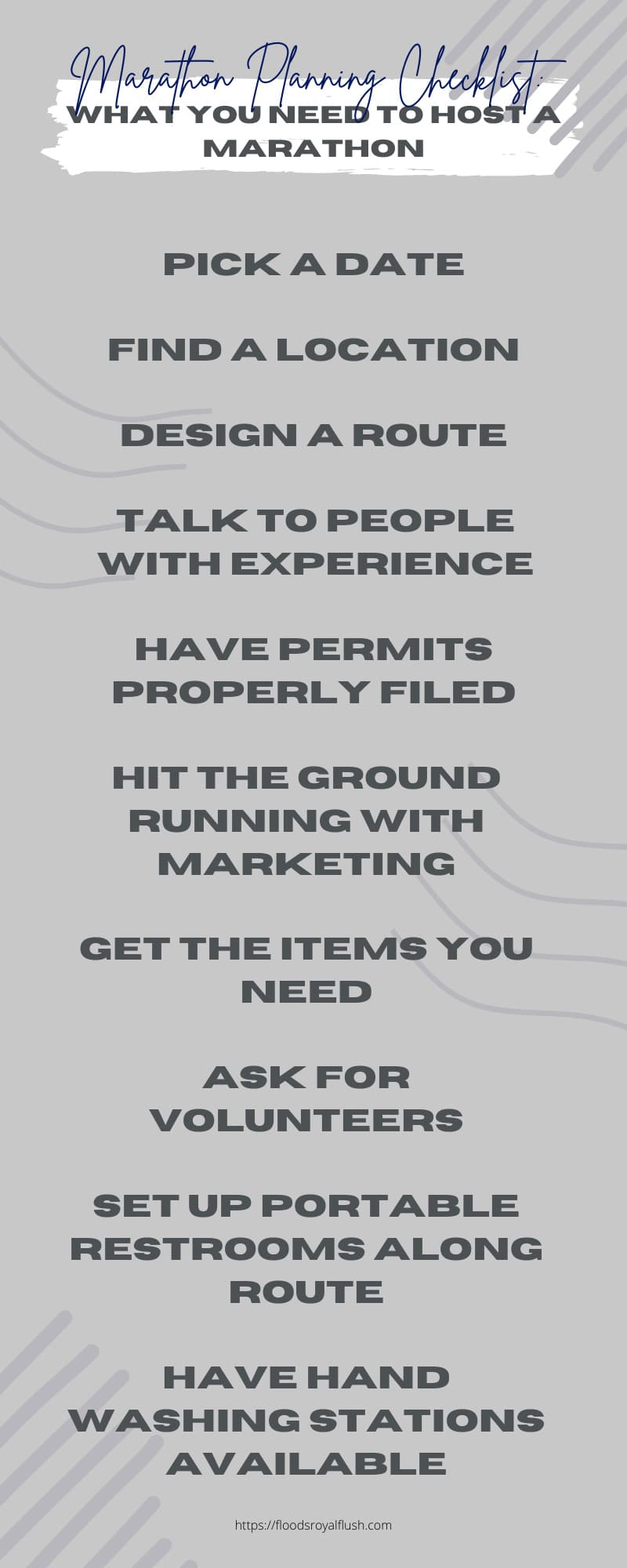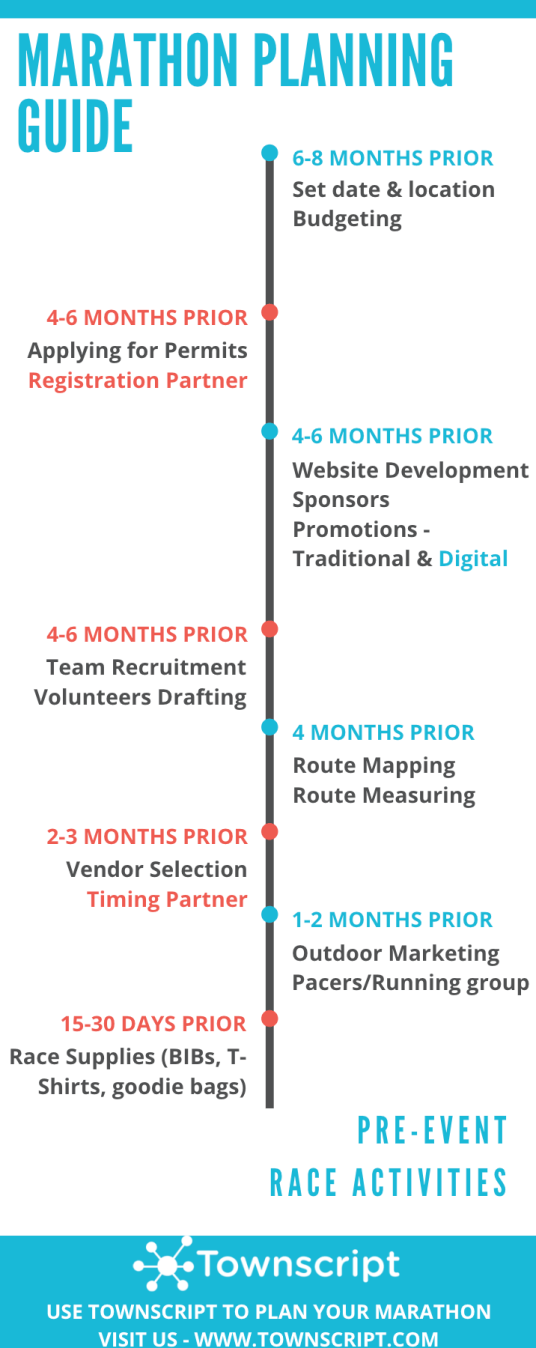How to Organize a Marathon Event?
To organize a marathon event, establish a core team, secure permits, plan the route and ensure proper safety measures. Running a marathon involves detailed logistics, coordination, and attention to participant needs.
Expert organization will create a memorable and successful event that promotes fitness and community engagement. In this guide, we will delve into the essential steps required to organize a marathon, from initial planning to post-event follow-up. Whether you are an experienced event planner or a first-time organizer, this comprehensive resource will help you execute a successful and enjoyable marathon for all participants.
Let’s explore how to plan and execute a marathon event that will leave lasting impressions on participants and spectators alike.
Choosing The Event Details
Welcome to the exciting process of organizing a marathon event! Choosing the event details is a crucial step that sets the foundation for a successful and memorable marathon. In this section, we will focus on how to decide on the event date, selecting the event location, and other essential event details that will contribute to the overall success of your marathon.
Deciding On The Event Date
When choosing the event date for your marathon, consider factors such as the weather, local events, and holidays. Aim to select a date that allows for optimal running conditions and minimizes potential scheduling conflicts for participants and volunteers.
Selecting The Event Location
The event location plays a significant role in the overall experience of the marathon. Factors to consider when selecting the event location include scenic routes, accessibility, parking facilities, and public transportation options. Additionally, ensure that the chosen location has sufficient space to accommodate the start and finish lines, as well as any post-race festivities.

Credit: issuu.com
Planning The Event Logistics
Organizing a marathon event requires meticulous planning of the event logistics, from securing a suitable venue to coordinating volunteers and ensuring the safety of participants. Proper event logistics management is key to a successful and smoothly-run marathon.
Obtaining Necessary Permits And Permissions
- Apply for permits early to ensure smooth process.
- Contact local authorities for event approval.
- Confirm all essential paperwork is in place.
Setting Up Race Course And Markers
- Choose a scenic and safe course for participants.
- Mark the route clearly with visible signage.
- Ensure distances are accurately measured.
Arranging Medical Support And First Aid
- Hire medical professionals for emergency response.
- Set up first aid stations along the route.
- Ensure participants’ safety is the top priority.
Managing Participant Registration
Creating An Online Registration Platform
Implement a user-friendly online registration form on the event website.
- Include fields for essential information like name, contact details, and emergency contacts.
- Utilize secure online payment options to streamline the registration process.
- Enable participants to select race categories and upload necessary documents.
Promoting The Event To Attract Participants
Employ various marketing strategies to maximize event participation.
- Utilize social media platforms to create buzz and reach a wide audience.
- Collaborate with local running clubs and organizations to spread the word.
- Offer early bird discounts and incentives to encourage early registration.
Credit: medium.com
Coordinating With Volunteers And Sponsors
Coordinating with volunteers and sponsors is crucial for the success of a marathon event. By recruiting and training volunteers and securing sponsorships and partnerships, you can ensure a smoother execution of the event.
Recruiting And Training Volunteers
Recruitment: Start by reaching out to local community groups, schools, and online platforms to attract volunteers. Use social media and community bulletin boards to spread the word. Provide clear guidelines for interested individuals to sign up, emphasizing the importance of their role in ensuring a successful event.
Training: Once volunteers are recruited, conduct thorough training sessions to familiarize them with their specific responsibilities. Clearly communicate the event’s objectives, logistics, and emergency procedures. It’s crucial to ensure that each volunteer feels equipped and confident in their assigned tasks.
Securing Sponsorships And Partnerships
Research and Outreach: Identify potential sponsors and partners that align with the mission and values of the marathon event. Craft a compelling sponsorship proposal highlighting the benefits of supporting the event. Utilize personal connections and networking to establish initial contact with potential sponsors.
Negotiation and Contracting: Once initial interest is established, engage in negotiations to outline the terms of the sponsorship or partnership. Ensure that both parties’ expectations are clearly defined and agreed upon. A written contract detailing the sponsorship arrangement can provide clarity and prevent misunderstandings.
Executing The Marathon Event
Organizing a marathon event requires meticulous coordination and smooth execution. Ensuring a seamless check-in and start, providing water and nutrition stations along the course, as well as coordinating award ceremonies and prizes are all vital aspects of a successful marathon event. Let’s explore each of these elements in detail.
Ensuring Smooth Check-in And Start
To ensure a smooth check-in and start, it is crucial to have a well-organized registration process. Participants should be able to register online ahead of time, providing their necessary details and signing waivers. On the day of the event, check-in stations should be clearly marked and equipped with volunteers to assist participants. It is essential to have a streamlined system for distributing race bibs, timing chips, and participant bags. Clear signage and instructions should guide participants to their designated start lines, while ensuring safety measures are in place.
Providing Water And Nutrition Stations Along The Course
Hydration and nutrition are key to a successful marathon. Planning water and nutrition stations strategically along the course is vital to keep participants energized and hydrated throughout the race. Water stations should be set up at regular intervals, staffed with enthusiastic volunteers ready to distribute cups of water. Additionally, providing nutrition stations with energy gels, fruit, and snacks can offer participants the fuel they need to stay strong. Each station should be clearly marked and easily accessible for runners without disrupting the flow of the race.
Coordinating Award Ceremonies And Prizes
Recognizing participants’ achievements is an important part of any marathon event. Coordinating award ceremonies and distributing prizes requires careful planning and attention to detail. It is crucial to establish clear criteria for participants to be eligible for awards and prizes, such as age brackets or overall race winners. The award ceremony should be scheduled in a prominent and accessible location, preferably near the finish line, to allow participants and spectators to gather comfortably. Presenting the awards with brief speeches and congratulatory remarks adds a personal touch to the ceremony, making it even more memorable for the participants.

Credit: floodsroyalflush.com
Frequently Asked Questions For How To Organize A Marathon Event
How Do You Set Up A Marathon Event?
To set up a marathon event, start by choosing a location, getting permits, and defining the route. Arrange for volunteers, security, medical support, and amenities like water stations. Promote the event through marketing and social media to attract participants. Lastly, manage logistics, timing, and registration to ensure a successful event.
How Do You Organize A Racing Event?
To organize a racing event, plan the date, location, and race categories. Obtain necessary permits, insurance, and safety measures. Advertise event, recruit volunteers, and hire vendors. Coordinate registration, timing, and results. Ensure smooth execution on race day.
How Do You Run A Marathon Properly?
To run a marathon properly, train consistently, follow a structured plan, eat a balanced diet, stay hydrated, and listen to your body.
Conclusion
Organizing a successful marathon event requires meticulous planning, effective promotion, and strategic partnerships. By focusing on participant experience, safety measures, and logistical details, you can create a memorable and impactful event. Embracing innovation and staying adaptable will be essential in meeting the unique demands of a marathon.
Keep these key considerations in mind to ensure a successful and rewarding marathon event for all involved.






